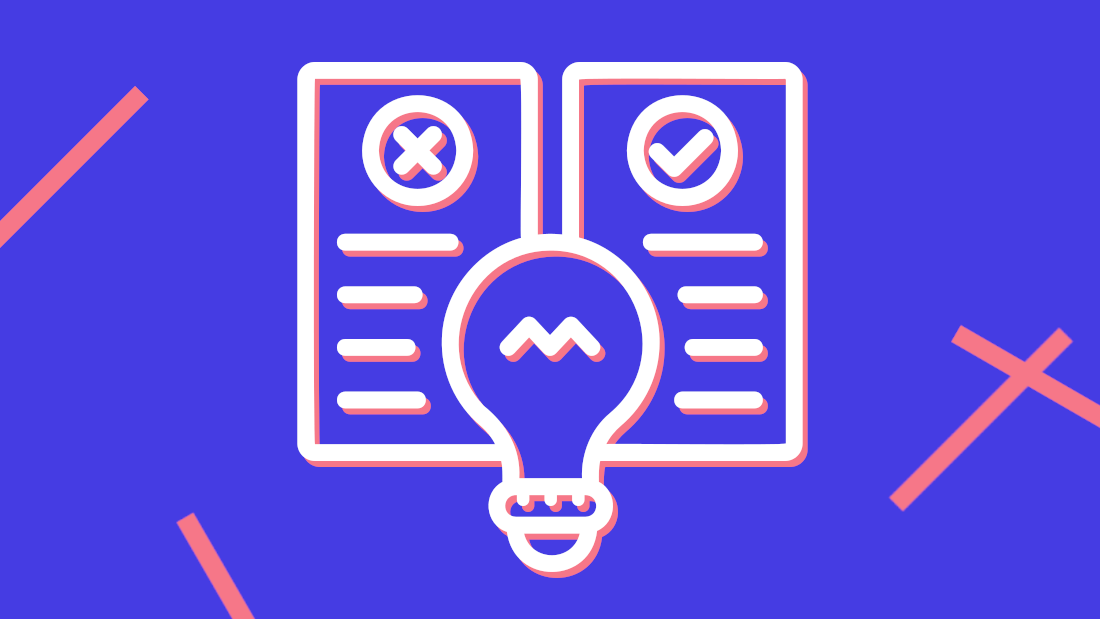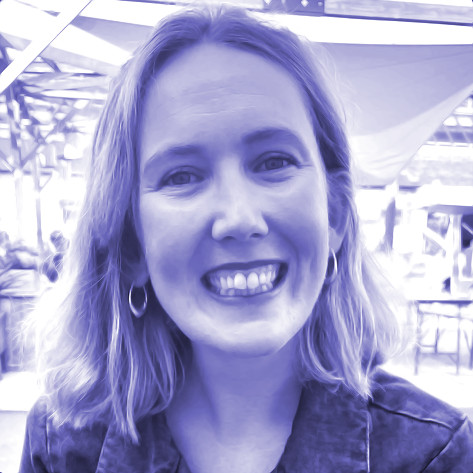When I moved from an in-house content role to become a content design consultant at Sparck I brought assumptions with me – and most of them were wrong.
If you're thinking about a career change, or want a new challenge, one option is staying within the same discipline but moving to a consultancy role.
But maybe your wary of doing that because of what you think consultancy might involve.
There are definitely stereotypes of what a consultant is, and does, often based on our personal experiences of working with business consultants from multinational firms.
Though being a design consultant is clearly not the same thing, I did bring some of those assumptions with me to Sparck. Let’s unpack a few and compare them with the reality.
Assumption 1: There would be some ‘all-nighters'
From what I’d seen in films and on TV, or read in books, I had the impression that agencies worked late hours to fix work in response to client feedback.
So, I started out at Sparck assuming the occasional ‘all-nighters’ would be inevitable. But at least there’d be beer and pizza, right?
I'm pleased to report I have clocked up zero late nights during my 18 months in the role.
Reality 1: Sparck cares about its people
One of our values at Sparck is to care about our people.
This takes many forms in practice, but I see it most clearly in the actions we collectively take to manage our workloads, and protect each other from burnout.
A lot of this comes to down to the amazing project team of which you’re a key member.
Between delivery managers, design leads and product owners, there's a focus on rigorous planning, careful stakeholder management, and transparency.
That protects us all from overpromising and helps us minimise how often those late nights or weekend sessions are required.
It also helps our clients keep true to the brief. What is the problem they really want to solve for the users of their product or service?
As a result, those last-minute amendments aren't as common as you might expect.
Assumption 2: Working remotely for clients might be lonely
In previous in-house roles I had a strong sense of belonging. We were one giant team, working towards one shared goal.
In a consultancy environment, who’s on my team? And where might that sense of a shared goal come from?
I was concerned I'd feel cut off and adrift.
Reality 2: Welcome to multiple communities
At Sparck there are multiple layers of support networks, or teams, to help you meet likeminded people and build connections.
Squads
You'll join a 'squad' of about 3 to 5 people and share an office base. I’m in the Nottingham office squad, for example.
With this comes a squad lead. They’re not a line manager or boss, and I like to think of mine as a coach.
Your squad will be made up of people from a variety of practices, which makes for excellent conversations over coffee and at social events.
Communities of practice
You'll also have your practice which is based on your discipline.
I'm part of the content design practice and we meet virtually once a week.
We also have a busy Slack channel and a couple of other optional meetings, such as a weekly content crit.
It's really brought the idea of a hive mind into reality for me.
When I’m stuck, or need inspiration, I reach out to my peers in the content practice and get the benefit of many minds, and years of experience.
This brings a huge amount of extra value to our clients, too.
Project team
Lastly, there's your project team. These are probably the people you'll spend the most time with and with whom you'll end up delivering work of which you can be really proud.
In most cases, there’ll be several Sparck people on a project, often working alongside people from BJSS.
But even if you’re the only Sparck person on a project, you’ll get all the support you need, either through colleagues from BJSS or via the networks listed above.
Shared goals
When it comes to a sense of a shared goal, I found this challenging at first.
Most of the time, as a consultant, you’ve got multiple goals to keep in mind – your project’s, and Sparck’s.
But I've learnt that as long as you're striving to do the best for your team and client, then you'll find yourself working toward Sparck’s most important goal by default.
Assumption 3: The environment will be ultra-competitive
I had an assumption consultancy would be competitive and cutthroat.
I wasn’t sure how authentic I could be, when it's not in my nature to shout about things I've done or achieved.
I thought to get posted to the most exciting projects I'd have to prove my worth, and fight my corner.
Reality 3: We leave ego at the door
Again, this assumption was quickly busted.
First of all, there's an abundance mindset here. Meaning that we don't think of opportunities as limited, we think of them as limitless.
This fosters a team-player environment where we're all happy to share our approaches, ideas and work.
We also have an amazing resourcing team here who strive to make sure we're placed on projects that match our experience and support our personal development goals.
There are mechanisms in place, such as internal CVs, project playbacks and regular review cycles, that means work doesn't go unnoticed, even if you’re not announcing your successes at every turn.
Others, such as your squad lead and head of practice, will advocate for you.
Assumption 4: I'll constantly be switching context
I thought consultancy work meant juggling multiple projects and multiple clients all at once. Thankfully, I was wrong.
At the time, I thought of myself as a good juggler and multi-tasker and thought it might be a good fit.
I'm now aware this would have led to more stress and lower quality outputs.
Reality 4: One project, one client, one focus
At Sparck, we're generally assigned one project at a time.
This means we have the time to fully embed ourselves with the client, and understand their goals and statement of work.
To quote my colleague Ray Newman this means we “really get to know the client and focus hard on the project at hand".
When projects come to an end, there is a period of change when you'll be expected to get to know a new client, or a new statement of work.
This is a bonus for me. It means I know there’s always going to be a new problem just around the corner.
And we all take that valuable experience from prior projects into new ones, becoming better designers, leaders and consultants with every step on the journey.
I’m happy to have been proved wrong
Most of my assumptions were wrong.
But, as a designer, there's nothing more exciting than testing your assumptions and learning something new.
If you're unsure about making the move into consultancy, or Sparck in general, we've got a brilliant recruitment team who will be happy to chat.
You can also get in touch with me, or any other Sparckie you might know, via LinkedIn.
In the meantime, read what others from Sparck have written about life at Sparck and our working culture:
- The power of focusing on positive feedback by Julia Silva, with Anne Dhir
- How we used design thinking to boost team wellbeing by Mel Galliwade
- What a visit to Portugal taught me about the power of ‘culture add’ by Azeem Butt



